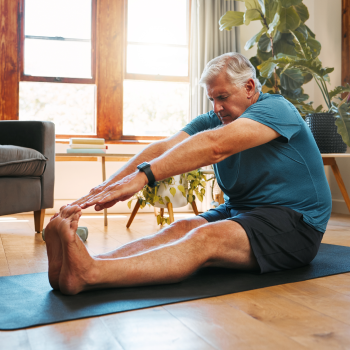Introduction
Overview: Exploring the role of yoga therapy in addressing the public health pain crisis through Comprehensive Integrative Pain Management (CIPM).
Objective: To understand how yoga therapy can contribute to solving systemic dysfunctions related to pain management and improving patient outcomes.
Problem Identification
Misunderstanding the Primary Problem: The pain crisis often focuses on opioid misuse instead of addressing the root causes of pain and suffering.
Need for Comprehensive Approach: Highlighting the importance of a biopsychosocial-spiritual (BPSS) framework in managing chronic pain.
Methodology
Literature Review: Examination of existing research and white papers on yoga therapy and its role in pain management.
Case Analysis: Review of specific instances where yoga therapy has been implemented in CIPM settings.
Findings
Role of Yoga Therapy: Yoga therapy's effectiveness in addressing skeletal, physical, and psychological symptoms related to chronic pain.
Accessibility and Inclusivity: Addressing the need for accessible and inclusive pain-care programs that accommodate diverse populations.
Pain Literacy: The gap in understanding contemporary pain science among stakeholders and how yoga therapy can bridge this gap.
Additional Insights
Comparative Analysis: Contrast between traditional pain management approaches and yoga therapy.
Barriers to Implementation: Identification of structural and cultural barriers to integrating yoga therapy in standard pain care.
Patient-Centered Approach: Yoga therapy's emphasis on self-management, wellness, and quality of life.
Recommendations
Educational Programs: Need for educational initiatives to increase pain literacy among healthcare professionals and patients.
Policy and Practice Changes: Suggestions for policy changes to include yoga therapy in standard pain care protocols.
Further Research: Identifying areas for further research in the effectiveness and implementation of yoga therapy in diverse settings.
Conclusion
Impact of Yoga Therapy: Yoga therapy's potential to transform pain management practices by focusing on holistic well-being and patient-centered care.
Future Directions: Encouraging the integration of yoga therapy into mainstream healthcare for improved pain management and patient outcomes.
To enrich this case study, additional reliable sources such as peer-reviewed journals, healthcare databases, and publications from professional healthcare organizations can be referenced for up-to-date data on yoga therapy's efficacy, its integration into healthcare, and strategies for implementation in health professions education.
Introduction
Objective: To examine the role of yoga therapy in Comprehensive Integrative Pain Management (CIPM) and its potential contributions to addressing the public health pain crisis.
Context: Exploring the distinction between contemporary yoga practices and yoga therapy, and how the latter integrates with CIPM principles.
Yoga Therapy: Definition and Scope
Description: Yoga therapy is defined as a person-centered approach that empowers individuals to progress towards improved health and well-being through yoga practices. It integrates biopsychosocial-spiritual (BPSS) approaches for specific health conditions.
Professional Standards: Yoga therapy has established educational standards, accreditation, and certification, ensuring a focused approach towards individualized patient care.
The Role of Yoga Therapy in CIPM
Salutogenic Intervention: Emphasizes identifying contributors to health and assisting individuals in achieving optimal well-being.
BPSS Framework: Yoga therapy aligns with the BPSS model, addressing physical, energetic, psychoemotional, social, and spiritual layers of well-being.
Patient-Centered Partnership: Focuses on compassionate care and shared decision-making, fostering therapeutic alliances and self-efficacy in pain management.
Challenges and Professional Development in Yoga Therapy
Addressing Pain Literacy: Recognizing the need for increased pain literacy among yoga therapists and healthcare professionals.
Professional Responsibilities: Emphasizing ongoing development in understanding pain management, interdisciplinary collaboration, and appropriate referral practices.
Community Awareness: Raising public awareness and understanding of yoga therapy's role in pain management.
Recommendations for Stakeholders
Educational Initiatives: Develop and disseminate resources to increase pain literacy among yoga therapists and other stakeholders.
Interdisciplinary Collaboration: Encourage collaboration between yoga therapists and healthcare providers for more effective pain management strategies.
Policy and Practice Integration: Advocate for the inclusion of yoga therapy in pain management protocols and healthcare policies.
Conclusion
Yoga Therapy's Potential: Yoga therapy offers a unique, cost-effective, and comprehensive approach to managing chronic pain, enhancing patient outcomes by focusing on overall well-being rather than just symptom management.
Future Directions: Continued advocacy and research are needed to further integrate yoga therapy into mainstream healthcare and CIPM.
Integrating Yoga Therapy into Pain Management: A Comprehensive Approach to Enhancing Accessibility and Efficacy
Introduction
Objective: To explore the integration of yoga therapy in CIPM, addressing accessibility, inclusivity, and efficacy in managing various pain conditions.
Background: Detailing the challenges in current pain-care programs and the potential of yoga therapy as a complementary, low-cost, and effective solution.
Accessibility and Inclusivity in Pain Care
Challenges: Identifying the lack of accessible and inclusive pain-care programs, especially in underserved populations.
Innovative Solutions: Examining pilot programs and initiatives by organizations like IAYT, Yoga Service Council, and Accessible Yoga, which aim to deliver CIPM in community settings for diverse populations.
Collaboration in Pain Management
Primary Care Integration: Discussing the importance of incorporating yoga therapy in primary care and the benefits it brings to current pain-care strategies.
Interdisciplinary Collaboration: Highlighting the need for collaboration with various health professionals and stakeholders to recognize and utilize the benefits of yoga therapy.
Yoga Therapy's Biomedical Contributions
Research Evidence: Presenting research findings on yoga’s positive effects on musculoskeletal pain conditions, including back pain, neck pain, knee pain, and carpal tunnel syndrome.
Functional Improvements: Demonstrating how yoga interventions have shown clinically significant improvements in function, pain, and quality of life in conditions like low-back pain and fibromyalgia.
Recommendations for Stakeholders
Best Practice Guidelines: Suggesting the inclusion of yoga therapy in best-practice guidelines from health departments and pain management alliances.
Awareness and Education: Advocating for the dissemination of clear, evidence-informed statements on the benefits of yoga therapy, targeting medical and integrative health professionals, insurers, and the public.
Conclusion
Potential of Yoga Therapy: Emphasizing yoga therapy's role as a cost-effective, adaptable, and patient-centered approach in pain management, capable of addressing the biopsychosocial-spiritual aspects of pain.
Future Directions: Calling for continued research, increased awareness, and policy support to fully integrate yoga therapy into mainstream pain management practices.
This case study outlines the crucial role of yoga therapy in enhancing pain management, focusing on its potential to make pain care more accessible, inclusive, and effective. It underscores the importance of interdisciplinary collaboration, education, and policy support to integrate yoga therapy into standard pain management protocols.
Yoga Therapy in Comprehensive Integrative Pain Management: Bridging the Gap in Biomedical and Psychosocial Care
Introduction
Objective: To explore the integration of yoga therapy into CIPM, emphasizing its biomedical and psychosocial contributions to managing rheumatic diseases, migraines, fibromyalgia, and immune functioning.
Background: Highlighting the challenges in current pain-care programs and the potential role of yoga therapy in offering accessible, inclusive, and effective solutions.
Biomedical Contributions of Yoga Therapy
Rheumatic Diseases: Examining evidence of yoga therapy's impact on osteoarthritis (OA), rheumatoid arthritis (RA), and systemic lupus erythematosus, including improvements in function, pain management, and physical mobility.
Migraines and Fibromyalgia: Presenting research findings on yoga’s effectiveness in reducing symptoms and improving quality of life in conditions like migraines and fibromyalgia.
Immune Functioning: Discussing the potential of yoga therapy in enhancing immune response and reducing proinflammatory markers.
Psychosocial Contributions of Yoga Therapy
Mental Health Benefits: Detailing the positive effects of yoga on mood disorders, anxiety, stress management, and PTSD, with a focus on self-regulation and resilience.
Social Well-being: Highlighting the role of yoga therapy in improving social well-being and reducing perceived social isolation, particularly in group settings.
Recommendations for Integrating Yoga Therapy in Pain Management
Policy and Practice Changes: Advocating for the inclusion of yoga therapy in best-practice guidelines and healthcare policies.
Interdisciplinary Collaboration: Encouraging collaboration between yoga therapists and healthcare providers to enhance pain management strategies.
Conclusion
Yoga Therapy's Potential: Emphasizing yoga therapy's role as a holistic, patient-centered approach in pain management, capable of addressing both biomedical and psychosocial aspects of pain.
Future Directions: Calling for continued research, awareness, and policy support to fully integrate yoga therapy into mainstream pain management practices.
This case study outlines the significant role of yoga therapy in enhancing both biomedical and psychosocial aspects of pain management, focusing on its potential to make pain care more accessible, inclusive, and effective. It underscores the importance of interdisciplinary collaboration, education, and policy support to integrate yoga therapy into standard pain management protocols.
Written By: Ram on 12-03-2023




























